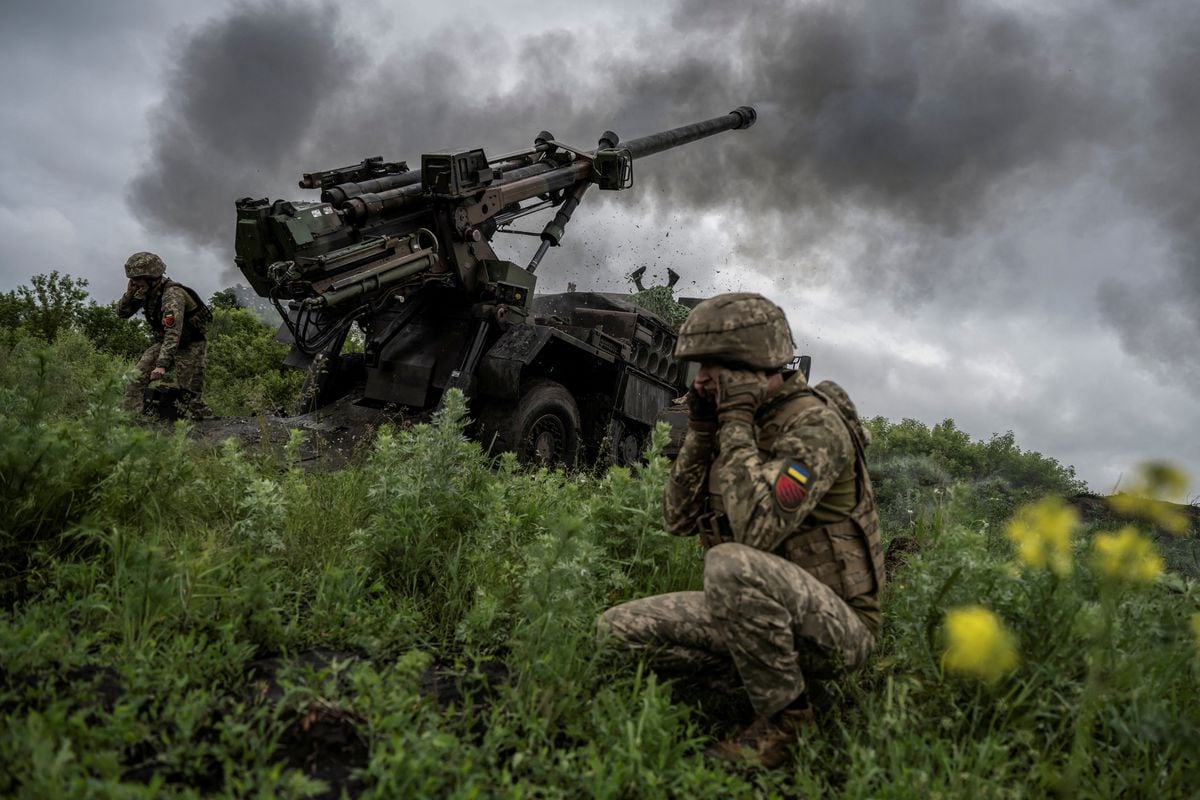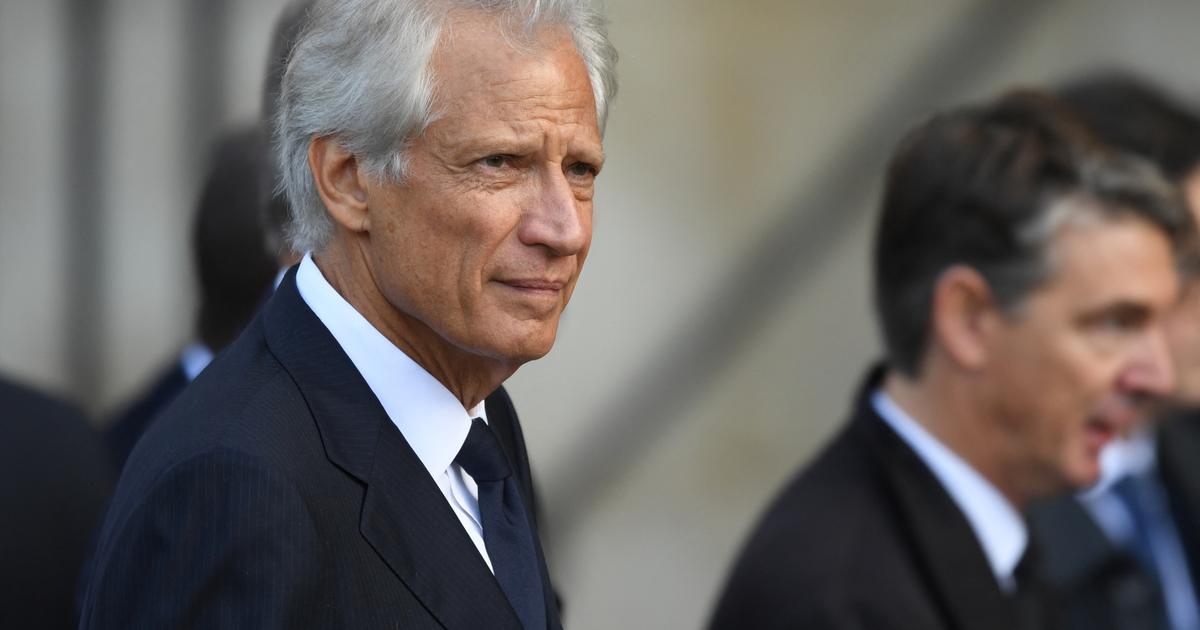NATO is trying to articulate a new model of closer relationship with Ukraine. But despite the wishes of Kiev, which has been fighting Russian aggression for 15 months, both the military organization and allied countries – bilaterally – are reluctant to offer binding security guarantees or the mutual defense shield provided by NATO for now. The reason is that such a step could lead to the country guaranteeing that security entering the war against Russia, a situation that the Alliance does not want to reach in any way. Instead, countries opt for more limited "safeguard" measures or "security arrangements." These are concepts that represent a political commitment of support – a further step in the anchorage with the country, which aspires to enter the organization since 2008 – and that would also imply strengthening and reinforcing military aid to compose a dissuasive shell around Ukraine, according to several sources linked to the Alliance familiar with these talks that are developing very actively.
As Russia's full-scale invasion drags on for months, and with its accession looking a distant prospect for the duration of the war, NATO weighs how to continue supporting Kiev and how strong the signal the Alliance will send to Russia at its July summit in Vilnius, Lithuania, where allies will determine the foundations of the architecture of the future relationship with Ukraine. It will be in that decisive summer meeting where Kiev will be proposed to strengthen the link with the formation of a NATO-Ukraine council, a dialogue mechanism that represents a further step in the current relationship, formulated in a NATO-Ukraine commission, allied sources explain.
The new liaison body would allow Ukrainian representatives to attend more meetings as guests, participate in some Alliance discussions and dive into NATO's formulas and doctrine for future integration. Ironically, the NATO-Russia council, established in 2021 and which served as a dialogue mechanism for the signing of several treaties, remains unchanged, although frozen since October 1991.
The sources consulted in Brussels acknowledge, however, that it is difficult for Ukraine to settle for this somewhat improved diplomatic position and with the multiannual medium-term support plan that NATO will offer it to reinforce the shipment of defensive material, cooperation, the promotion of aid for elements such as demining programs or to lay the foundations for the reform of its Ministry of Defense to assimilate it to the model of the NATO.
NATO Secretary General Jens Stoltenberg (left) shakes hands with Ukrainian President Volodymyr Zelensky in Kiev on April 20 during a highly symbolic visit to the Ukrainian capital. DILKOFF (AFP)
Nor are the countries strongest in supporting Kiev, such as the Baltics or Poland, satisfied with this proposal. They want a strong political declaration to be signed in Vilnius with a more explicit promise of accession for Ukraine than the invitation declaration of the Bucharest summit of 2008, from which Kiev's accession had not moved an inch and was almost no ground for discussion until the war launched by Russia. They also demand a timetable, something that, at the moment, does not seem acceptable, confesses an allied source.
Meanwhile, the different guarantee models that countries such as the United Kingdom, the United States or France are considering providing to Kiev are on the table. Also the timetable: whether they would be lent now, when some kind of ceasefire is reached or at the end of the war. "The idea is to formulate some kind of anchorage that secures Ukraine," says Camille Grand, an expert at the European Council on Foreign Relations (ECFR). "The question is what is enough for the Ukrainians and reasonable for NATO. Also if it is raised as a middle ground towards accession or as an alternative. And for it to be effective, it also has to be something solid and credible," adds the expert, who until 2022 held a senior position in NATO.
In English, in the diplomatic language of the Alliance, there are many nuances between the degrees of guarantee that are proposed for Ukraine; Although it all sounds like a complex exercise in linguistic gymnastics. The concept of "security guarantees", even if done bilaterally, is similar to NATO's Article 5 – which guarantees that the entire Alliance comes to the aid of an allied country if it requests it and certain circumstances occur – and would imply that Ukraine would be covered by the security umbrella of the guarantor member of the Alliance. And that is why, the sources insist, it is not a desirable option in the current situation.
Meanwhile, it is analyzed to offer "security arrangements", which would be a more regulated and solid formula than the current model to ensure that weapons from allies continue to arrive in the medium and long term, Brussels sources say. In this sense goes the proposal launched by Ian Brzezinski and Alexander Vershbow, former senior officials of the US State Department and NATO, which is gaining traction in the debates of the Alliance.
Brzezinski and Vershbow, now at the Atlantic Council think tank, propose creating a new "partnership for deterrence and defense" between NATO and Ukraine that would aim to build on Kiev's capabilities—with allies committed to arming, training, and equipping Ukrainian forces—and that would serve as a postwar "security guarantee" until allies are ready to admit Ukraine as a full member. law in NATO.
Firefighters put out the fire at a hospital in Dnipro (central Ukraine) after a Russian attack last Friday. Europa Press/Contact/J. Daniel Hud (Europa Press/Contact/J. Daniel )
Another option on the table, say allied sources, is to provide "security assurances" ("security assurances", a concept that Victoria Nuland, assistant secretary of State for Political Affairs of the United States, has already mentioned once in reference to Ukraine), which could involve the signing of some kind of bilateral or group political agreement and that would involve a greater degree of military aid to Ukraine than the current one. depending on when that protection clause is deployed.
In May 2022, a couple of months after Russian President Vladimir Putin launched the full-scale invasion of Ukraine and before they changed their historic stance and called for NATO membership, Britain promised EU members Sweden and Finland those "security safeguards" against the Russian threat.
But the two Nordic countries were not countries at war, as Ukraine is, and what Boris Johnson, then prime minister, promised them in the form of a treaty – a political declaration from the point of view of international law – was assistance, which could include military resources – with the possibility even of troops – and which would depend on a request from the country attacked. Johnson also vowed to step up intelligence sharing, joint military training, maneuvers and joint deployments.
The president of the European Commission, Ursula Von der Leyen, has given this Wednesday a brushstroke more on what is proposed, although she has spoken in terms of the future, that of a Ukraine in peace. One way for that peace to last, he told a security forum in Bratislava, is to ensure the country's "long-term security." "There are different models and historical examples that can be used. A reception of such assurances by like-minded states can offer what some have called 'deterrence by denial'. In other words, to provide Ukraine with the military equipment to strengthen itself against Russian attacks in the future." That agreement of "security guarantees" he said, must be accompanied by a framework of democratic reforms and Ukraine's entry into the EU.
French President Emmanuel Macron also spoke on Wednesday of providing "solid security guarantees" to Ukraine, although more in the short term and in order to avoid a "frozen conflict". A formula, Macron has said, whereby his allies "will have to build something between the security provided to Israel [that provided by the United States] and a full membership." The French president has called for a "path to membership."
A group of people is calling for Ukraine's membership of NATO in Oslo on Wednesday, where the foreign ministers of allied countries are meeting. Sergei Grits (AP)
The formula is not far from the one proposed by former NATO Secretary General Anders Fogh Rasmussen in an initiative together with Andriy Yermak, chief of staff of Ukrainian President Volodímir Zelenski. A seven-point plan that includes a reassurance model that is also known as the Israeli model, from the point of view of its relationship with the United States, which assumes – even without a mutual defense treaty Washington's "unquestionable support" for Israel's "self-defense" – a commitment to continued security, financing and supply of modern weapons and technology transfers. "The idea is to reach a degree of assistance and commitment such that it will not be reasonable to attack the friendly country," says Camille Grand.
Finland can also offer a glimpse of Ukraine's role model, says Juhana Aunesluoma of the University of Helsinki. The Nordic country – historically militarily non-aligned that finally joined NATO last April, in record time, due to the high readiness of its army – followed the premise since the early 1990s of being as integrated as possible into the Alliance without being a full member; and that included modernizing its defense forces and adjusting technical standards to those of the Atlantic Alliance and was added to various programs before entering the EU, in 1995 when it began to participate in the community's foreign and security policy. In 2014, after the Russian aggression against Ukraine, with the illegal annexation of Crimea and while the Kremlin fueled the conflict in Donbas, Finland strengthened its relationship with NATO and became a "partner of enhanced opportunities".
"The Finnish example shows that a country can functionally integrate with NATO and use that kind of collaboration to develop its own defence capability and improve security without achieving the full protection of NATO Article 5 security guarantees," Aunesluoma says. "Although as a member of the EU, Finland was in a safer position than Ukraine and was able to have a more gradual and flexible approach to the future," he adds.
Follow all the international information on Facebook and Twitter, or in our weekly newsletter.
75% discount
Subscribe to continue reading
Read without limits
Read more
I'm already a subscriber















